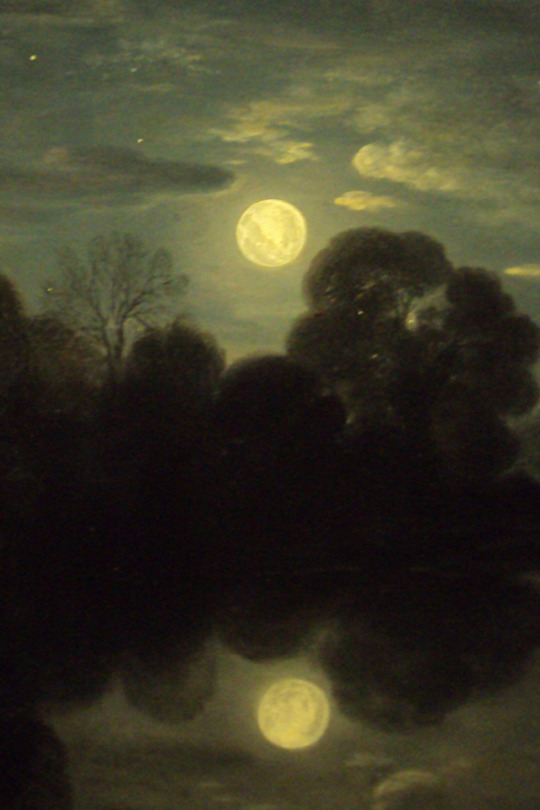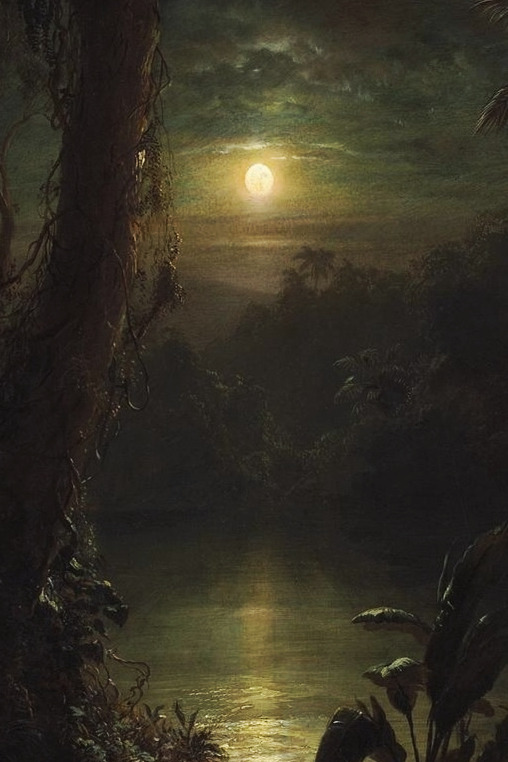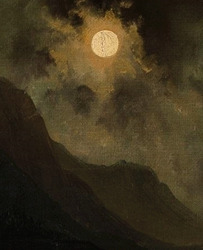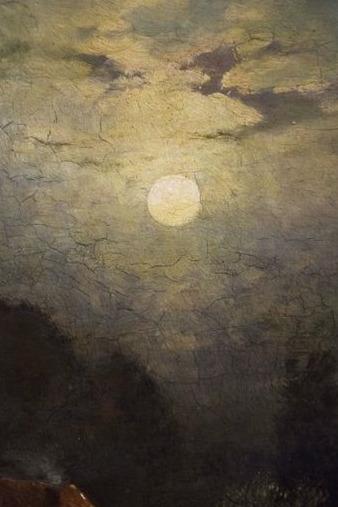Welcome to my blog! I am a 29 year old witch/pagan who has been studying since I was about 15 or so. All interaction is welcome as long as you are respectful, and not a spam blog!
Don't wanna be here? Send us removal request.
Text
I decided to grab a couple articles on cultural appropriation of smudging as well as ethical issues. Please feel free to discuss your feelings on this if you are of a tribe that uses smudging.
Smudging
Smudging, or saging, has become a trendy wellness practice that some people use to cleanse "bad energy" from their homes or their space. Smudging is an important ritual for many indigenous people: An article by Indigenous Corporate Training, Inc., a Canadian organization that delivers anti-bias trainings, says that “Smudging is traditionally a ceremony for purifying or cleansing the soul of negative thoughts of a person or place,” and that it is a term mostly originating from indigenous tribes in North America. So when non-native people burn sage to "smudge" their homes or other spaces, it can minimize the cultural importance of this ritual, and have a negative impact on how the herbs are grown. Instead, advocates say non-native people can learn to cleanse their spaces in ways that are culturally and ecologically sensitive. There are lots of ways to achieve the benefits of smudging by using more ethical practices, terminology, and materials.
“It was illegal for Natives to practice their religion until 1978 in the U.S., and many were jailed and killed just for keeping our ways alive, including my great-great grandfather,” Ruth Hopkins, a Dakota/Lakota Sioux writer, tells Bustle. Smudging is part of those practices. It’s so important to certain indigenous cultures, that Native people are fighting to be able to perform it in hospitals. Smudging, therefore, is not to be taken lightly.
Because white sage is in such high demand, thanks to this recent trendiness, the Chumash people (of what is now called Southern California) are concerned that the plant is being overharvested. The United States Department of Agriculture says that white sage has important medical benefits — it is used to cure colds and aid postpartum healing — and it’s a crucial part of the surrounding ecosystem. But some brands continue to sell white sage, despite Native communities speaking out against it. Hopkins says that this behavior is unacceptable. “It’s exploitative and amounts to silencing Native voices and erasing our cultural heritage,” she says.
For Hopkins, the appropriation of sage is made worse because the plant is often not being harvested correctly. “When using medicinal plants, it’s important that the plant is used sustainably. When we pick sage, we always leave the root and say a prayer of thanks for our harvest. This is as much a part of smudging (or saging) as burning the plant is,” Hopkins says. To explain further, it’s important to leave the root, because that’s how the plant grows back. If someone is harvesting white sage and doesn’t know to leave the root, they’re preventing more plants from growing.
If you have used herbs to cleanse your space in the past and enjoy the ritual, you don't have to give it up in order to so in a culturally conscious way. Smudging refers to a specific healing cultural spiritual practice, but smoke cleansing can look a lot like smudging, but it’s just the simple act of burning herbs, wood, incense, or other safe-to-burn materials that possess unique cleansing properties. The smoke is then waved over the area you want to cleanse. You can smoke cleanse whatever you want, as much as you want. Some cultures may have spiritual practices connected to smoke cleansing, but the act of smoke cleansing is not inherently spiritual or specific to a certain culture, like smudging is.
Personally, I like to smoke cleanse with a cinnamon stick. It leaves me feeling spiritually focused and relaxed. And there are other materials, including lavender, pine, and cloves, that can be burned safely. Palo Santo ("holy wood” in Spanish) sticks have been getting more popular as an alternative to sage, but buying this Central and South American tree used by Amazonian tribes can also be harmful, in similar ways to sage. Palo Santo has been added to the International Union for Conservation of Nature’s (IUCN) list, because its overharvesting can lead to extinction, although the tree is not nearing extinction currently.
If smoke cleansing is something that makes you feel calm, then go for it! It's important, however, that in the process, you're respecting Indigenous cultures and the land's ecosystem. That may mean harvesting your own sage or other herbs sustainably, contacting brands to ask them to stop selling white sage without giving due to Native cultures, or using another material. Ultimately, being intentional about how you implement this practice in your life — and being mindful about its origins and significance — is helpful for everyone.
Source: https://www.bustle.com/p/is-burning-sage-cultural-appropriation-heres-how-to-smoke-cleanse-in-sensitive-ways-18208360
Sage
This year it was evident due to the social media reaction that people were expressing anger and concern over the increase in commercialization of white sage (Salvia apiana) and the cultural appropriation and offensive marketing that overlooks ethics and ecological, cultural awareness of a deeply sacred and spiritual plant.
The rumblings on social media in regards to those who claimed to wildcraft white sage, along with selling the wildcrafted material that was being gathered from public lands, were clues that the balance between respectful wildcrafting and the use of terms like “ethical wildcrafting and sustainable wildcrafting” for personal use versus commercial gain was being pushed to its limit.
In October of 2018, “Cleaning Space Kits” including white sage bundles appeared on the shelves of Anthropologie, and with the collective social media outcry they were removed from the stores almost immediately—thank you, Anthropologie. At this time white sage can be purchased on Amazon and Walmart websites and on the shelves of stores such as Urban Outfitters in pre-packaged new aged kits. This is a serious indicator of alarm for many who know and respect the ecological and cultural fragility of this plant.
One of the most active voices in the social media outcry is the IG @Meztliprojects. Meztli Projects is an Indigenous based arts and culture collaborative, based in Los Angeles. Meztli Projects brilliantly updated the Wikipedia page on white sage to provide information on the recent controversy, citing the illegal harvest arrests and current press on this issue over the last two years.
Commercial harvest of wild white sage populations is a concern held by many Native American groups, herbalists, and conservationists. In June 2018, four people were arrested for the illegal harvest of 400 pounds of white sage in North Etiwanda Preserve in California.
It is very difficult when companies make claims of sustainable harvest when we have no accountability within a very secretive trade. In some cases permits are given on public lands for commercial harvest of economically valued plants, but in the case of white sage no such permit exists. The only way this would be legal is if harvesting took place on private land with permission. What I learned when I was in California and visited the Etiwanda Preserve was that it is the epicenter of the current commercial harvest. The rangers that I spoke with described a very difficult situation in that it is mostly undocumented individuals that are desperate for the work, putting themselves in danger, sneaking into the Etiwanda Preserve to harvest. The residents living near the preserve, working with law enforcement to help coordinate efforts to address the issue were responsible for the recent arrest in June of 2018. This came about when four undocumented individuals were arrested with over 400 pounds of white sage harvested from the preserve.
The North Etiwanda Preserve is a unique Riversidean Alluvial Fan Sage Scrub plant community that provides protection for a number of sensitive plant and wildlife species, several of which are Federal or State listed threatened or endangered. Listed endangered species that may occur on the Preserve include the least Bell’s vireo, California gnatcatcher, the southwestern willow flycatcher, and San Bernardino Merriam’s kangaroo rat. Sensitive species include Los Angeles pocket mouse, San Diego black-tailed jackrabbit, American badger, coastal cactus wren, San Diego horned lizard, coastal western whiptail, Southern sagebrush lizard, San Bernardino ring-necked snake, coastal rosy boa, Coast patch-nosed snake, mountain yellow-legged frog, two-striped garter snake, Parry’s spineflower, and Plummer’s mariposa lily.
The Management Plan for the preserve acknowledges that the area is considered to be a sacred site by the Gabrielino-Shoshoni Nation and Serrano people and is currently being used for cultural purposes. It further states in the management plan their priority actions of conducting historical research, coordinating with tribes to facilitate access for ceremonies, and collection of white sage. When I spoke to a preserve manager, she confirmed the Preserve’s efforts to provide permits to tribal members for collection of sage for ceremonial use.
The San Bernardino associated governments along with multiple state agencies, federal/USFWS, local universities, and non-profits manage the preserve, which was first established in 1998 and expanded with highway mitigation funds in 2009. Working together the management plan establishes its principle goals.
Management Plan principal goals:
Preservation of Native Species, Habitats, and Ecosystem Processes;
Protection and preservation of Cultural Resources;
Monitoring Existing Habitats, Species, and Physical Conditions;
Restoration of Disturbed On-Site Habitats;
Develop and Maintain an Informational Database
What is important to stress is that this underground sage mafia is not ethical or sustainable wildcrafting as it is portrayed in hipster IG accounts and stores! The scale of white sage commercial trade on the Internet and demand in China is alarming. United Plant Savers is working with agents at the USFWS and at the State level to provide as much insight as possible into the trade so that law enforcement can be informed to protect the preserve. I was invited by the owner of a white sage company to meet at the Etiwanda Preserve in March of 2019; he wanted to show his sustainable harvesting methods. I quickly pulled out my phone to show him that it was against the law to do so, and that recent arrests had been made. He carried on as if that was not the case, and fortunately law enforcement arrived and I was able to get confirmation of the laws in regards to the preserve from the officer on the spot. His story quickly changed, and he claimed he no longer wildharvested but had a farm where he is now growing sage for his company. I tried to convey why the preserve did not allow commercial harvest permits and the level of community engagement that goes into ensuring safe haven for threatened and endangered species. Certainly he was proud to show off his harvesting technique and make claims to be a former student of Michael Moore, but he lacked ecological knowledge of the diversity of species in the habitat he claimed to sustainably harvest, not to mention basic laws surrounding wild harvest of plants on state and federal lands.
It can be frustrating when attempts to inform stores who sell sage bundles respond that they are getting their sage from those that claim sustainable harvesting techniques and have all the right verbiage on their social media and websites. Consumers and retailers need to understand laws in regards to wild plants because even if one’s techniques are sustainable, if it is not permitted, then it is illegal. A first step for a buyer or consumer is to ask to see a permit.
White sage is abundant in its local habitat as a keystone species of its plant community, but that habitat is under threat due to development and it is fragile, apparent by the many endangered and threatened species that rely on its habitat. Most important to note is that it can be grown, and if it is to be in any form of commercial trade and certainly on the scale it is now, the only sustainability claims should be that it is coming from a cultivated source, and a buyer should always visit the farm to verify the claim.
Traveling throughout California to understand the state of sage habitats and the cultural teachings of white sage, I came across the recently published book Kumeyaay Ethnobotany at the Anza Borrego Visitors Center. The photograph by Rose Ramirez caught my attention and through a Google search I was able to locate her and ask permission to use the image for the cover of this year’s journal.
We then began a dialogue on the issues and concerns over its recent popularity and I asked if she would provide me a quote to share from the perspective of an indigenous elder. Here is the quote she provided me.
“We do not sell white sage. If you need it as a medicine and we have it, we’re going to give it to you. We discourage selling medicine plants, spiritual plants, because we don’t know if the person collected them in a good way, with a good heart. But if you have white sage growing in your own back yard, you would know because you would be taking care of it.” – Barbara Drake, Tongva Elder
I found the quote she shared from Barbara Drake that speaks to why they discourage selling of spiritual plants on a commercial scale because one does not know if the person who is collecting them is doing so in a good way, with a good heart as very profound. Wildharvesting can be detrimental to the plant and/or the species that relies on the plant, but often it is most harmful to those who are harvesting, when they are forced into doing so for very little because they are in a desperate situation. This is why programs like fair wild are important because they address the fair treatment of those communities of harvesters and the plants, and this is important. If we the consumers want to be healed by the plants, then should we not want those who are harvesting to be treated fairly? Conversely harvesting wild plants when regulated and when harvesters are treated fairly can result in beneficial relationships, for both consumer and harvester, and the harvester and the plants, as well as for the plants and their habitat. It seemed serendipitous that my year would be filled with two impactful sage encounters, when I learned about the wild sage native to Albania facing overharvesting in the wild due to unregulated trade and the herbal companies working towards a solution by transitioning to cultivated sage and support to small scale farmers. The Ethnobotany Project is a collaboration among Rose Ramirez, Deborah Small, and the Malki Baliena Press, working together to document southern California and northern Baja California’s Native people’s contemporary uses of native plants. The primary goal is to create a resource for Native people in this region to share and learn traditional knowledge about native plant uses and gathering practices. The project began in 2007. Two publications have resulted so far: a 2010 large-scale calendar and a book in 2015. The Malki Museum, founded in 1965 by Native Americans (Dr. Katherine Siva Saubel and Jane Penn) on a California Indian Reservation, is the oldest non-profit museum and has been the inspiration for several other museums. My journey to understand the complexity of white sage has been a learning journey to the many state and federal recognized tribes and the diverse projects and museums working hard to revive and celebrate cultural and ecological diversity that is more beautiful and powerful. I would encourage those who are drawn to white sage to spend time researching the cultures that have tended its habitat and choose a smudge that you build a personal relationship with and question the idea of ethical wild crafting, considering the habitat, the harvester, the laws, the cultures, and the medicinal teachings. Source: https://unitedplantsavers.org/what-is-going-on-with-white-sage/
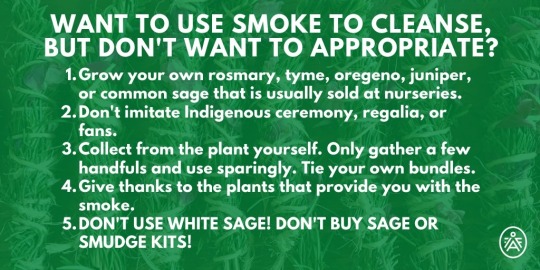
2 notes
·
View notes
Photo

Tips for growing herbs Herbs that like clay soil ★Angelica ★Chives ★Comfrey ★Fennel ★Lemon Balm ★Peppermint Herbs that like dry locations ★Bay ★Garlic ★Lavender ★Oregano ★Rosemary ★Sage ★Thyme Herbs that love shade ★Angelica ★Chervil ★Chives ★Cicely ★Comfrey ★Feverfew ★Ginger ★Horseradish ★Lemon Balm ★Parsley ★Peppermint ★Sweet Woodruff ★Violet Herbs that do well in containers ★Basil ★Bay ★Chives ★Feverfew ★Hyssop ★Lavender ★Lemon Balm ★Oregano ★Parsley ★Peppermint ★Rosemary ★Sage ★Tarragon ★Thyme
8K notes
·
View notes
Photo

Sometimes your eyes cannot see the dream that happens in front of your own eyes. Artwork: @randominternational Video: @jesserieser Gallery: @pacegallery
18K notes
·
View notes
Photo
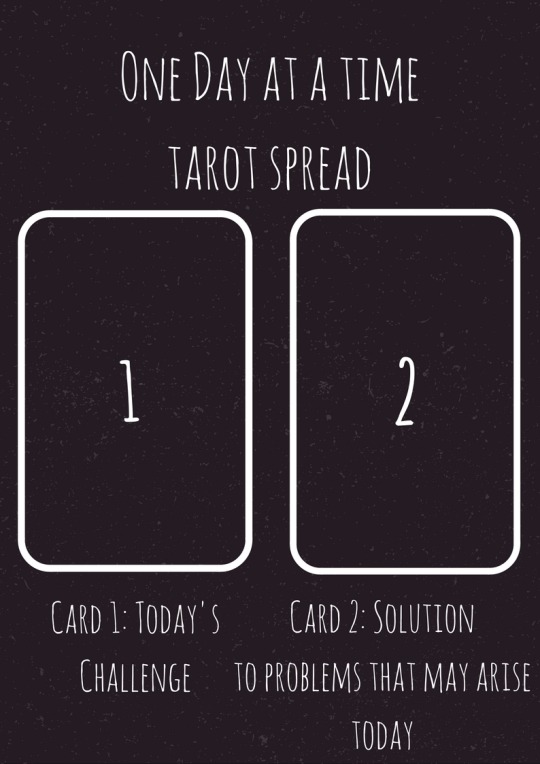
I made a super quick and simple tarot spread based on taking things “one day at a time”, for those of us who are feeling overwhelmed by a situation. This spread is designed to give fast advice on the day you’re reading for in a non-cluttered way. Hope this helps! I’d love to see people using this so feel free to tag me if you do! :)
Card One- Today’s Challenge: This card is basically self-explanatory. Pull a card to give you a hint about a problem or challenge you may face today.
Card Two- Solution to Problems that may Arise Today: This is the advice card. Pull a card to give you an idea of how to go about solving whatever comes up today. For example, pulling the Queen of Swords could indicate that you need to handle today’s issues with logic and controlled temper, and leave emotions out of it.
11K notes
·
View notes
Photo


Hey guys!
I’m so excited to share this language learning challenge that I created with you!
It’s called Brick-By-Brick Language Learning Challenge and it’s made for anyone who already knows the basics of their target language and wants to improve their knowledge :)
If you participate in this challenge, make sure to use the hashtag #brickbybricklearning and to tag me here on tumblr (@mylinguisticadventures) and on instagram (@mylinguisticadventures).
That’s it for now. Happy language learning!
4K notes
·
View notes
Photo









This is like installing Windows on a Mac.
2M notes
·
View notes
Text

What a beautiful and handy little guide! 💗😍🔮
4K notes
·
View notes
Text
🌟 cosmic witch starter pack 🌟
some resources to get you started with cosmic witchcraft:
what is a cosmic witch?
cosmic witchcraft 101
cosmic altar & room ideas
must haves for the cosmic witch
astrology: brief zodiac overview
planetary correspondences
star grounding
celestial warding
spiral meditation
celestial music
black hole spell
black hole decoy spell
starlight charm
planetary charm jars
planetary tarot spread
zodiac essential oil blends
cosmic witch vibes
cosmic witchcraft masterpost
cosmic deities:
nyx
hecate
hathor
nut
sopdet
sah
crystals:
amethyst
astrophyllite
celestite
copper
moonstone
aura quartz
crystals associated with planets
plants to grow/use in your craft:
cabbage & red romaine lettuce (nasa is growing some on the international space station!)
starflower
chickweed
star anise
juniper
fruits & vegetables associated with planets
a good blog that posts about cosmic witchcraft: @lunaesteria
and a cosmic witchcraft playlist.
2K notes
·
View notes
Text
"Yeah I don't believe people with penises can be witches. Witch craft is for cis women only!"
Me:
6K notes
·
View notes
Text
Gentle witch little things
Simple things you can do to bring more love and positivity into the world:
enchant the bus or train you’re on, so that everybody has a pleasant day or a safe travel home
paint protective sigils in the misty windows of buses or shops when it rains, and leave words of encouragement and praise on public bathrooms’ mirrors
bless passing ambulances and firefighter trucks with speed and safety for their patients/destination
wear an enchanted lipstick/gloss for your smile to brighten the day of everybody you meet
enchant your spare change so that it gives luck to the beggars you donate it to; they need it, don’t they?
actually, just enchant your money, so that retail and low-wage workers can have a better day when they serve you
leave blessed acorns and harmless trinkets in various places like buses or waiting rooms; give other people something to wonder about and make their day, and kids an item to roll in their hands mindlessly
bless food and leave it for stray animals; let birds be messangers of hope and miraclous event for everybody that sees them
whisper encouragement to trees and grass you pass by; let them know someone cares, someone sees their beauty, and awaits their bloom
smile at children and pets; provide them with the positive energy that the world is trying to kill in them
leave motivational notes, praise and silly drawings charged with love and hope on post-it notes as you go; they can brighten the day of those that find them
33K notes
·
View notes
Text
The Great Goddess Hecate (Hekate)

Who is Hecate? She is the Goddess of Witchcraft, Necromancy, Ghosts, Magic, and, in some instances, the Night, Darkness, The Mist, and Moon. For some She is also the goddess of motherhood, protection, and the sea. She is a Hellenic deity, born of the Titans Asteria and Perses. There’s a few beliefs circling around Her being a crone goddess or a Triple Goddess, but those are modern and neopagan beliefs—which She predates. I also consider Her to be a part of the Chthonic deities.
Symbology: Black dogs, Wolves, Keys, Torches, Flames, Torches, Crossroads, Serpents, Daggers, Birds of Prey (crows, ravens, owls), the Moon, witchcraft tools (such as cauldrons, tarot, athames)
Offerings & Devotional Acts for Her:
Figurines of any of Her symbols
keys, skeleton keys, lockets
fire witchcraft and candles, flames, matchsticks
dedicating any lunar or symbolic jewelry to Her
black/dark crystals such as obsidian and onyx
nocturnal animal imagery
black/cool colored glitter
baneful/poisonous herbs and plants
pomegranates/berries (She seems to really like blackberries)
dark blend wines
honey, cinnamon, poppy seeds, chocolates (dark)
mugwort, lavender, roses, jasmine, dragon’s blood
bones and feathers from birds of prey (please check your local laws about obtaining these)
pinpricks of blood (please DO NOT attempt this if you struggle with self harm/etc, blood magic is particularly strong and isn’t for everyone. She will understand if you cannot offer that to her).
Taking midnight walks, setting up altars and rituals at crossroads, paying respects to the dead and practicing your craft in a cemetery
Any playlists, poems, literature, whether it be your own or just a piece you associate with Her, also make wonderful offerings.
Lunar Influences & Connections: Reaching out to Hecate tends to work best at night, and really any time the moon is at it’s peak. The Witching Hours, midnight to 3A.M., during strong lunar influences (blue moons, blood moons, eclipses, new moons, etc) all hold strong bonds with Hecate. Also, any time it is particularly foggy or your surroundings are covered in a mist is a good time to try to connect with Her.
Disclaimer: These are correspondences that have been gathered through my personal experiences working through my craft with Her. If you find She responds better to different offerings/during different times, by all means, stick to it! Your bond with Her is your own and should be cultivated in whichever way works best for you and Her. Thank You!
16K notes
·
View notes
Text
Crystals that are NOT suitable for placing in water / making gem water
This list will explain common stones that are either toxic to use for drinking in gem water or stones that are soluble in water. :)
Alunite: Non toxic but soluble in water
Anglesite: Toxic and slightly soluble in water
Arsenopyrite: Potentially toxic
Azurite: Harmful
Azurite-Malachite: Harmful
Azurite-Pseudomalachite: Harmful
Bunsenite: Toxic; allergen; avoid skin contact
Calomel: Possibly hazardous to health
Cerussite: Toxic
Chalcanthite: Harmful; easily soluble in water
Cinnabar: Very toxic!
Cinnabar-Opal: The cinnabar stored in the opal is toxic
Crocoite: Toxic
Cuprite: Harmful
Durangite: Potentially toxic
Eclipse Stone: Limestone with orpiment, toxic
Eilat Stone: Harmful
Erythrite: Potentially toxic
Fiedlerite: Toxic
Fluorite, Antozonite variety: Potentially harmful
Galenite: Toxic and slightly soluble in water
Gaspeite: Harmful; allergen; avoid skin contact
Greenockite: Toxic
Halite: Not toxic in small quantities, but dissolves easily in water
Iron-nickel Meteorite: Harmful; allergen; avoid skin contact
Jamesonite: Potentially toxic
Lemon Chrysoprase: Potentially harmful; allergen; avoid skin contact
Lopezite: Very toxic! Hazardous even through skin contact
Malachite: Harmful
Millerite: Toxic; allergen; avoid skin contact
Minium: Toxic
Nickeline: Toxic; allergen; avoid skin contact
Olivenite: Potentially toxic
Orpiment: Toxic
Proustite: Potentially toxic
Psilomelane and Pyrolusite: Harmful
Pyromorphite: Potentially toxic
Rauenthalite: Toxic
Realgar: Toxic. Store in dark, securely locked place.
Scorodite: Potentially toxic
Sphaerocobaltite: Harmful; allergen; avoid skin contact
Stibnite: Harmful
Tetrahedrite: Potentially harmful
Ulexite: Non toxic but slightly soluble in warm water
Valentinite and Senarmontite: Harmful
Vanadinite: Toxic
Wulfentie: Potentially toxic
45K notes
·
View notes









